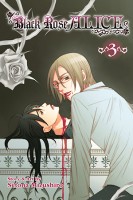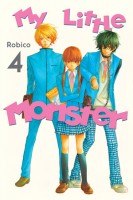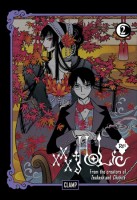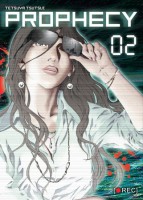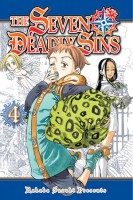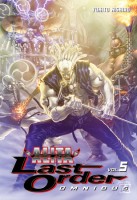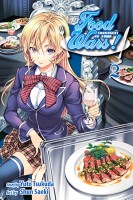My News and Reviews
Two reviews at Experiments in Manga last week! First up, I finally got around to reading Kouhei Kadono’s Boogiepop at Dawn. Technically the sixth Boogiepop novel, and the fourth to be released in English, it actually serves as a prequel to the entire series. I’ve really enjoyed what I’ve read of the Boogiepop series and found Boogiepop at Dawn to be particularly satisfying. I’m hoping to do a Boogiepop Adaptation Adventures post once I have a chance to read the manga and watch the anime and live-action adaptations. The second review posted last week was of Yuki Urushibara’s Mushishi, Volume 2. Mushishi is one of my favorite manga, and the second volume includes some of my favorite stories in the series. The review is part of my monthly manga review project focusing on horror manga. Next month will feature Setona Mizushiro’s After School Nightmare again.
Sparkler Monthly has been getting some good press recently, which I’m happy to see. Jason Thompson delves into the comics side of the magazine in the most recent House of 1000 Manga. Lianne Sentar was interviewed by Brigid Alverson at Robot 6 about Marketing to the Female Gaze. Sparkler has been adding a bunch of new comics lately. The most recent is actually a rescue from the closure of Inkblazers, Heldrad’s Orange Junk. More comics and more print releases will be announced in the very near future (I’m particularly looking forward to the Tokyo Demons Cherry Bomb collection), so now is a better time than ever to consider becoming a member to support the creators and the rest of the Sparkler team.
Last week was apparently “manga week” at ICv2, which included interviews with Dark Horse’s Mike Richardson (Part 1 and Part 2) and Viz Media’s Kevin Hamric (Part 1 and Part 2). The Comics Journal has been collecting and posting tributes to the late Yoshihiro Tatsumi, and Ryan Holmberg has written an in-depth article on Tatsumi for the site as well. Elsewhere online, Comics Forum posted Masafumi Monden’s article Shōjo Manga Research: The Legacy of Women Critics and Their Gender-Based Approach and Reflecting Lights has a nice publisher spotlight on Vertical Comics. Finally, Sean has a roundup of all the manga and light novel licenses that have recently been announced.
Quick Takes
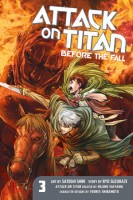 Attack on Titan: Before the Fall, Volume 3 written by Ryo Suzukaze and illustrated by Satoshi Shiki. An adaptation of a series of light novels, Before the Fall is a prequel to Hajime Isayama’s immensely popular and successful manga Attack on Titan. It takes place well before the original series, during a time in which humanity is facing the Titans, but has yet to really find a way to effectively deal with them. At this point, the Survey Corps at least knows how to destroy the Titans, but it is lacking the resources—specifically the three-dimensional maneuvering gear—that greatly aids in actually accomplishing the feat. Apparently, as the extra manga at the end of the third volume implies, Kuklo will somehow be involved in reclaiming that crucial bit of technology. However, most of the volume is devoted to the intense battle and tragic outcomes of the Survey Corps and Kuklo’s unfortunate confrontation with a Titan outside of the walls. There’s some plot and story development as well, but the action takes precedence this time around. In general, I don’t find Before the Fall to be quite as compelling as the original Attack on Titan, but it is interesting to see more of the overall worldbuilding and backstory that has been created for the franchise as a whole.
Attack on Titan: Before the Fall, Volume 3 written by Ryo Suzukaze and illustrated by Satoshi Shiki. An adaptation of a series of light novels, Before the Fall is a prequel to Hajime Isayama’s immensely popular and successful manga Attack on Titan. It takes place well before the original series, during a time in which humanity is facing the Titans, but has yet to really find a way to effectively deal with them. At this point, the Survey Corps at least knows how to destroy the Titans, but it is lacking the resources—specifically the three-dimensional maneuvering gear—that greatly aids in actually accomplishing the feat. Apparently, as the extra manga at the end of the third volume implies, Kuklo will somehow be involved in reclaiming that crucial bit of technology. However, most of the volume is devoted to the intense battle and tragic outcomes of the Survey Corps and Kuklo’s unfortunate confrontation with a Titan outside of the walls. There’s some plot and story development as well, but the action takes precedence this time around. In general, I don’t find Before the Fall to be quite as compelling as the original Attack on Titan, but it is interesting to see more of the overall worldbuilding and backstory that has been created for the franchise as a whole.
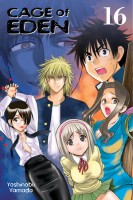 Cage of Eden, Volume 16 by Yoshinobu Yamada. It’s been a while since I’ve read any of Cage of Eden, though the sixteenth volume seems to be pretty par for the course. I enjoy a good survival story, but the manga is just not as enthralling as I want it to be. It doesn’t help that the fanservice tends to be narratively awkward; the sixteenth volume includes not one but two naked bath scenes of buxom middle school girls that interrupt the flow of the story. As for the story itself, there have been a few interesting developments. Having split into separate groups to investigate the spire and the pyramid on the island, the survivors have been able to begin piecing together exactly where they are as they uncover more and more secrets. Considering the number of deaths in Cage of Eden so far, it’s probably a safe bet that not everyone is going to survive to the end of the series. Especially taking into account the fact that the dinosaurs and other beasts aren’t the only dangerous creatures on the island. Humans can also be extremely deadly. And manipulative, too. It’s this menacing human element that the sixteenth volume of Cage of Eden focuses on. Trying to survive on the island has definitely taken its toll on the characters both mentally and physically.
Cage of Eden, Volume 16 by Yoshinobu Yamada. It’s been a while since I’ve read any of Cage of Eden, though the sixteenth volume seems to be pretty par for the course. I enjoy a good survival story, but the manga is just not as enthralling as I want it to be. It doesn’t help that the fanservice tends to be narratively awkward; the sixteenth volume includes not one but two naked bath scenes of buxom middle school girls that interrupt the flow of the story. As for the story itself, there have been a few interesting developments. Having split into separate groups to investigate the spire and the pyramid on the island, the survivors have been able to begin piecing together exactly where they are as they uncover more and more secrets. Considering the number of deaths in Cage of Eden so far, it’s probably a safe bet that not everyone is going to survive to the end of the series. Especially taking into account the fact that the dinosaurs and other beasts aren’t the only dangerous creatures on the island. Humans can also be extremely deadly. And manipulative, too. It’s this menacing human element that the sixteenth volume of Cage of Eden focuses on. Trying to survive on the island has definitely taken its toll on the characters both mentally and physically.
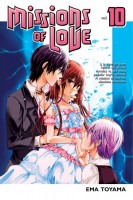 Missions of Love, Volume 10 by Ema Toyama. To be completely honest, I wasn’t expecting to enjoy Missions of Love nearly as much as I do, but here I am, ten volumes later, still completely hooked on the series’ melodrama and exceptionally twisted train wrecks of relationships. And there are some pretty momentous developments in those relationships in this volume, specifically a confession of love that can’t be mistaken or ignored. It seems as thought the time is drawing very near in which Yukina will have to choose either Shigure or Akira, but she’s only now realizing that might mean losing one of them completely. Partially in an attempt to avoid having to make an immediate decision, she challenges them both with a mission: to take her on a date as boyfriend and girlfriend. Missions of Love has always been suggestive, often skirting the edge of what would be deemed appropriate behavior and occasionally crossing over the line, and the tenth volume is no different. The relationships in the series aren’t healthy ones and never have been. Seeing as how many of them were initially based on manipulation and blackmail that probably isn’t too surprising, but it is interesting to see the characters develop legitimate feelings of affection for one another. They just don’t always go about expressing it in the best fashion.
Missions of Love, Volume 10 by Ema Toyama. To be completely honest, I wasn’t expecting to enjoy Missions of Love nearly as much as I do, but here I am, ten volumes later, still completely hooked on the series’ melodrama and exceptionally twisted train wrecks of relationships. And there are some pretty momentous developments in those relationships in this volume, specifically a confession of love that can’t be mistaken or ignored. It seems as thought the time is drawing very near in which Yukina will have to choose either Shigure or Akira, but she’s only now realizing that might mean losing one of them completely. Partially in an attempt to avoid having to make an immediate decision, she challenges them both with a mission: to take her on a date as boyfriend and girlfriend. Missions of Love has always been suggestive, often skirting the edge of what would be deemed appropriate behavior and occasionally crossing over the line, and the tenth volume is no different. The relationships in the series aren’t healthy ones and never have been. Seeing as how many of them were initially based on manipulation and blackmail that probably isn’t too surprising, but it is interesting to see the characters develop legitimate feelings of affection for one another. They just don’t always go about expressing it in the best fashion.
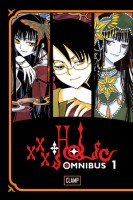 xxxHolic, Omnibuses 1-2 (equivalent to Volumes 1-6) by CLAMP. I read the first few volumes of xxxHolic when the manga was originally being published by Del Rey Manga but never got around to finishing the series before it went out of print, so I’m happy that Kodansha Comics is releasing the omnibuses. xxxHolic is a manga of extremes. One moment it’s ridiculously comedic and the next it’s deadly serious. The manga can be a strange mix of humor and horror; sometimes the balance between those two aspects of the series works better than others. I like the incorporation of yokai in xxxHolic since I have a particular interest in yokai. Generally, CLAMP’s renditions of the traditional stories are much more contemporary and free-form in nature. Yokai and folk tales serve more as a source of loose inspiration rather than a rigid structure for the manga to build upon. xxxHolic and Tsubasa: Reservoir Chronicle are directly related to each other, although they can be read separately without to much of a problem. So far, I find the Tsubasa references to be some of the least interesting in xxxHolic, but I do get a kick out of some of the throwaway nods to other CLAMP manga. For example, the leads from Legal Drug make a brief appearance with a minor (yet arguably crucial) role selling a hangover cure.
xxxHolic, Omnibuses 1-2 (equivalent to Volumes 1-6) by CLAMP. I read the first few volumes of xxxHolic when the manga was originally being published by Del Rey Manga but never got around to finishing the series before it went out of print, so I’m happy that Kodansha Comics is releasing the omnibuses. xxxHolic is a manga of extremes. One moment it’s ridiculously comedic and the next it’s deadly serious. The manga can be a strange mix of humor and horror; sometimes the balance between those two aspects of the series works better than others. I like the incorporation of yokai in xxxHolic since I have a particular interest in yokai. Generally, CLAMP’s renditions of the traditional stories are much more contemporary and free-form in nature. Yokai and folk tales serve more as a source of loose inspiration rather than a rigid structure for the manga to build upon. xxxHolic and Tsubasa: Reservoir Chronicle are directly related to each other, although they can be read separately without to much of a problem. So far, I find the Tsubasa references to be some of the least interesting in xxxHolic, but I do get a kick out of some of the throwaway nods to other CLAMP manga. For example, the leads from Legal Drug make a brief appearance with a minor (yet arguably crucial) role selling a hangover cure.

